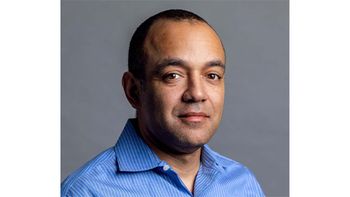
Suspicious order monitoring of opioids again lights up investigative journalists
Washington Post and 60 Minutes question McKesson’s 2017 $150-million fine
Here’s the capsule summary of a
Beyond that, there’s a muddle of claims and counterclaims from the reporters, the ex-DEA sources interviewed, McKesson and the Healthcare Distribution Alliance (HDA) that are extremely difficult to sort through. The foundation for the latest articles was laid
There’s a legitimate question as to whether the 2016 law has, as the Post puts it, “undermines opioid investigations;” HDA did commit a substantial effort to getting it passed. Nevertheless, John Gray, president of HDA, wrote in a
Back to the McKesson settlement
The Post reports and 60 Minutes interviews cite multiple DEA investigators (nearly all of whom are retired and thus freer to speak; and some of whom are working as consultants to state attorneys general who are bringing suits against opioid manufacturers and distributors) who say that DEA had enough evidence to “go after McKesson criminally” (i.e., a case that could result in jail time), but that DEA attorneys preferred to settle the dispute administratively through fines and suspensions. McKesson, in a
Additionally, McKesson, like HDA, other industry trade associations and some manufacturers, have published recommendations on handling the opioid crisis that call for educating the public, pharmacists and physicians, and getting better coordination of state and federal regulatory activities (such as prescription drug monitoring programs [PDMPs], which track patients’ prescription activity), but overlook tighter control of distribution. Distributors are “doing our part” (as McKesson puts it), it seems, by seeking to get others to do more.
The general accusation of the Post and other media is that the pharma manufacturers and distributors are making too much profit to want to change. But the data don’t support this accusation, at least for distributors. Using some basic data drawn from HDA’s newly published
That back-of-the-envelope calculation is debatable both for its size and its accuracy; the basic claim of the Post is that the opioid epidemic would have been curtailed if distributors did their job as DEA expected. This points to the most problematic aspect of SOM—that DEA and distributors have been unable to come to an understanding of what is required by SOM programs; the very issue that led to the passage of the Ensuring Patient Access law. In the Post report, this disagreement seems to exist even inside DEA: while the investigators were ready to bring out handcuffs, DEA attorneys would not file charges. It’s conceivable that a similar case which was brought against FedEx in 2015 (and which resulted in a federal judge throwing out all the charges and calling FedEx “factually innocent”) justified the attorneys’ caution.
Distributors have complained for years that DEA has the ability to identify suspicious pharmacies and other opioid buyers themselves, while the distributors have a window only on what they are shipping. (DEA investigators would say that those one-company sales themselves can be sufficiently suspicious.) Stalemate ensues, while more drug abusers die.
There are two things to watch for in future developments in opioid legal action: the time, some day, when the Trump Administration, having officially labeled the opioid crisis a “public health emergency,” establishes any substantive resources or policies to address it. Second, there are now 44 state attorneys general preparing lawsuits against manufacturers and distributors (and there have been some state or regional settlements already). At some point, the legal wrangling will come to some conclusion; various observers have cited the multi-billion-dollar, multi-year settlement with the tobacco industry as a precedent. That could change the game for all businesses—manufacturers, distributors and others—and perhaps fund the treatment programs abusers so desperately need.
Newsletter
Stay ahead in the life sciences industry with Pharmaceutical Commerce, the latest news, trends, and strategies in drug distribution, commercialization, and market access.





